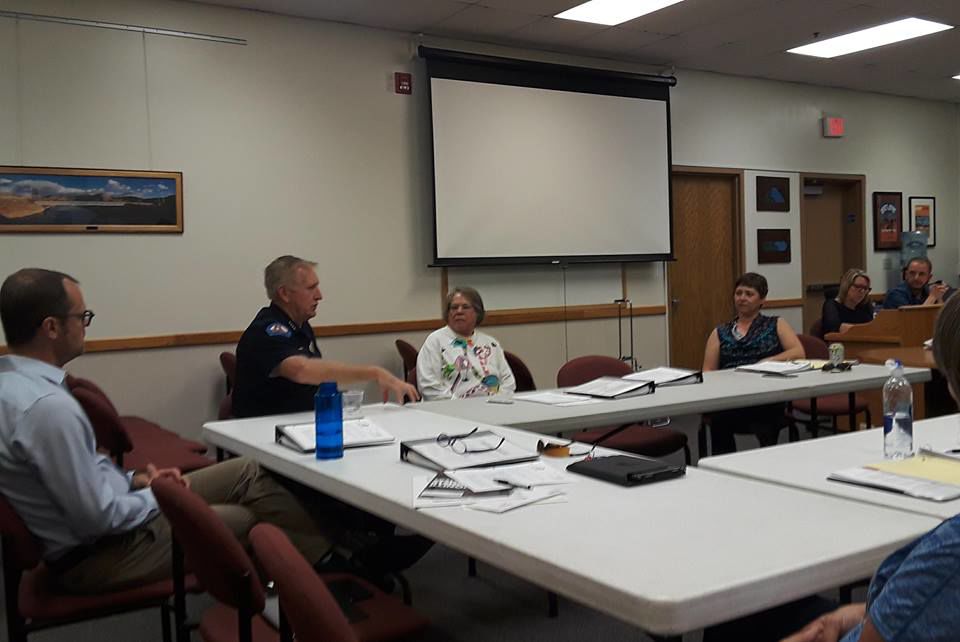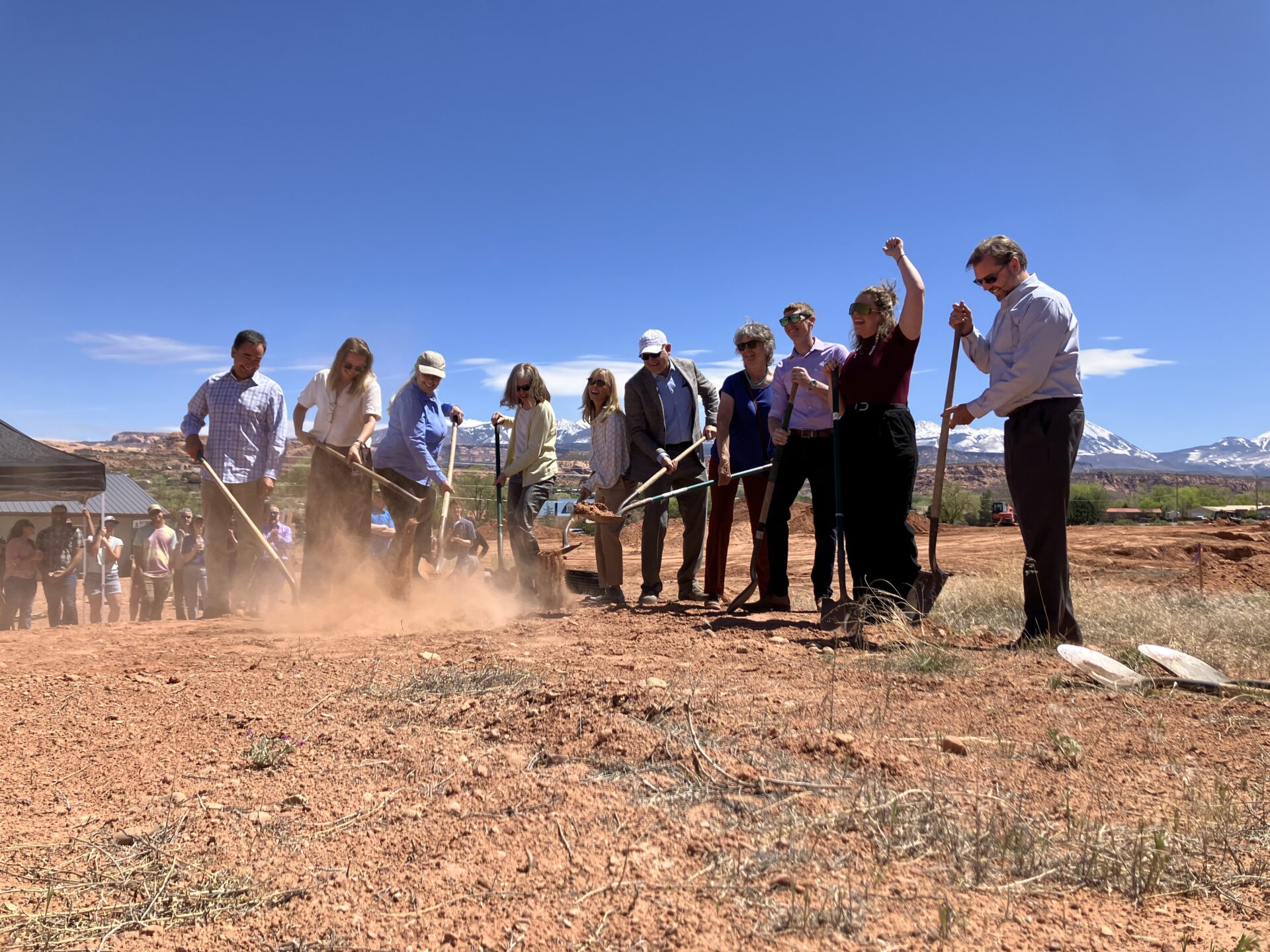Tourism is viewed as a partner in finding solutions to victim advocacy, community safety and affordable housing issues in Moab and Grand County.
That is the idea that the Moab Area Travel Council Advisory Board and the city’s police chief discussed at the board’s meeting on Tuesday, May 8.
Moab City Police Chief Jim Winder shared some of his observations about Moab, as a guest speaker at the meeting.
Winder has been working as police chief for about nine months and said he has learned a lot about rural living since making the move from Salt Lake City to Moab.
“The amount of engagement that the community has, rivals, I would say, any community I’ve ever been in,” Winder said, adding that his assessment includes communities 10 times the size of Moab.
Winder said the police department in Moab has the opportunity to work closely with at-risk community members, an opportunity that doesn’t often exist in larger cities like Salt Lake City.
As sheriff in Salt Lake City for many years, Winder said it was standard protocol for officers to respond to domestic violence calls, take a report and then leave the scene quickly to move on to their next assignment. The issue with that, said Winder, is that as much as 15 percent of the officers’ call volume was going to domestic violence incidents, and the large amount of work didn’t allow the officers to make personal connections with the members of the community.
“They also don’t look for the underlying issues resulting in that call,” Winder said.
In Moab, Winder said he sees how city police officers work closely with community members and strive to connect with people during calls to understand their underlying issues. He said he is working with the City of Moab to apply for a victim advocate grant. A victim advocate will work with law enforcement and victims to help them navigate toward solutions to their underlying issues.
Managing underlying issues, intergenerational poverty and substance misuse disorders, will create a safer community, Winder said, and the interaction and support of law enforcement will ensure that there is mutual success.
“What do I mean by that? If a community is not viewed as being safe, it will certainly not have sustained tourism,” Winder said.
Another observation Winder made of the Moab community is its perception of travel and tourism.
“I have noticed a great tension in the community between those who are struggling with the impacts of development and growth and population and how busy it is, and those who want it to remain as it has always been,” Winder said.
Winder said the community’s growth is inevitable and said tourism is a benefit if it is well-managed.
Moab Area Travel Council Executive Director Elaine Gizler said that every day the travel council faces negativity from the community in regard to tourism.
“I have said, we are not going back, we are going forward,” Gizler said. “We have to find ways we can make it better.”
Gizler said the travel council has remained sensitive to the community’s feelings about tourism and is balancing its work by being strategic with its advertising. She said tourism in the Moab area can also be better managed with infrastructure and housing improvements.
With regard to the limited availability of affordable housing in the community, Moab Area Travel Council Advisory Board chair Howard Trenholme asked Winder what the police department’s views are on homelessness.
“What can we do to kind of work with them until other options are available?” Trenholme asked.
“The first issue we are engaged with right now is addressing individuals who are camping and sleeping at the west end of town in the woodland area,” Winder said, emphasizing that there is a significant fire danger from the people camping in that area.
Winder and the board discussed two different situations happening simultaneously in Moab that result in homelessness: people who are gainfully employed but unable to secure housing, and people with underlying mental health and substance misuse issues that lead to chronic homelessness.
“The next phase that has to be taken, is an expansion of services,” Winder said. “Co-occurring dependencies, those are not cured but are managed.”
Winder said one solution to managing the community’s homeless may be to have a shelter.
“Everyone is one medical bill away from being out on the street,” Winder said.
Board members said that ideally the community must be able to offer different services to people based on their circumstances with temporary housing, temporary jobs or substance misuse disorders.
“Is there a really creative way to think of that type of transitory housing need that we haven’t thought of?” asked Moab City Manager David Everitt.
Trenholme said he spoke to one member of the community, a man who suggested having safe zones near Moab where people can legally camp or sleep in their vans or vehicles, similar to how the truck drivers sleep in their cabs along the highway at the edge of town.
“These [people] are our workforce who are sleeping on the streets,” Trenholme said.
Winder agreed that the idea of having a safe zone for workers is a creative idea.
“I’d be thrilled if the city or any municipality said, here are the rules, let’s try it out,” Winder said.
People want a cure to long-term issues in the community, said Winder, but it’s how the issues are managed in the best way possible that makes the difference.
Trenholme, Gizler and the travel board said it is possible for the travel board to do something about safety and affordable housing, and said tourism can be a partner in managing and finding creative solutions to those issues.
“I want to be a part of the solution,” Trenholme said.
Winder and board members see hope for tourism to aid in safety and housing issues




